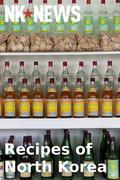When North Korea and food are mentioned in the same sentence, most people will still think of the famine of the mid-1990s, when untold thousands of North Korean citizens starved and many of the survivors were reduced to eating grass or bark. While food security remains a problem in rural areas of North Korea, in urban areas the "donju", or new middle class, have been spending their good fortune in exclusive restaurants serving not just the traditional dishes of the North such as cold noodles and barbecue duck, but also importing previously unknown foreign specialties like pizza, hamburgers and cappuccino. In fact, North Korea has an almost religious reverence for its culinary heritage. Trainee chefs are regularly dispatched to far-flung country provinces to collect and preserve folk recipes, restaurants are considered as "museums of traditional cuisine", and one of the first websites launched by the North Korean government was www. cooks.org. kp, which showcases local ingredients, recipes and restaurants. While North Korean food is often considered to be less spicy than its Southern equivalent, it also reflects long-standing cultural and commercial links with Russia. Barbecue and hotpot are popular, as in the South, but so is potato salad - a Russian specialty. North Korean dishes are also influenced - just like everything else - by the laws of the regime. While beef is hugely popular in South Korea, in North Korea it is technically illegal, as eating draught animals is banned. Many North Koreans also have an extremely sweet tooth, paying premium prices for imported Chinese candy and South Korean Choco Pies. This book brings together a selection of North Korean recipes. We hope you enjoy both the book and the recipes; jal meokkesseumnida!


